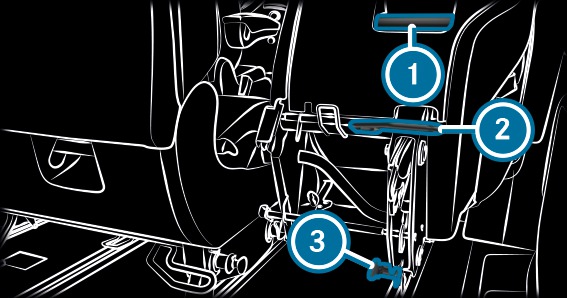If the rear bench seat is not engaged, it may be flung around during travel.
In order to ensure that the rear bench seat can securely engage, keep the seat guide rails and anchorages in the vehicle floor free from dirt and foreign objects.
If the indicator tab of the seat anchorage is not retracted into the seat anchorage, the seat is not correctly engaged. Engage the seat again.
When adjusting a rear bench seat, you or another vehicle occupant could become trapped by the guide rail of the rear bench seat, for example.
The rear bench seat will not engage when folded forward. The rear bench seat may inadvertently fold back while the vehicle is accelerating, braking or changing direction suddenly or in the event of an accident, for example.
People within the sweep of the rear bench seat may become trapped.
If you fold the EASY-ENTRY section of the rear bench seat forwards, it is easier to get into or out of the second rear seat row.




 upwards.
upwards.  .
. The EASY-ENTRY section is correctly engaged when the seat anchorage engages audibly and the indicator tab is no longer visible and is fully retracted into the seat anchorage.
 upwards.
upwards.  .
.  for the front seat anchorages upwards.
for the front seat anchorages upwards. The rear seat leg of the EASY-ENTRY section engages audibly. The indicator tab on the seat anchorage is no longer visible.
The EASY-ENTRY section is correctly engaged when the seat anchorage engages audibly and the indicator tab is no longer visible and is fully retracted into the seat anchorage.
Repeat the process if the seat is not correctly engaged.

